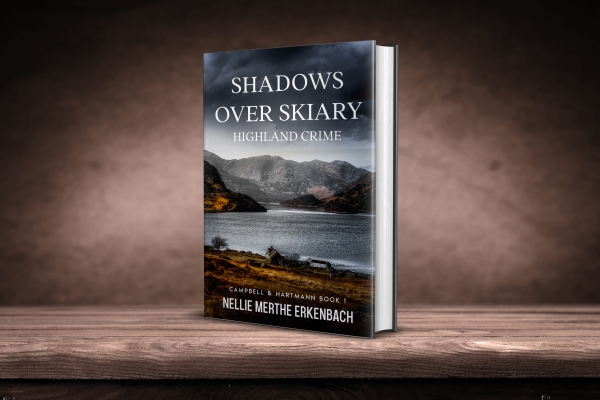The thrilling and brilliantly narrated Highland crime series opens a fantastic new chapter in Scottish literature with its unique blend of haunting atmosphere, extraordinary characters, and emotional depth.***When Isabel Hartmann hikes to the idyllic Sandaig beach on Scotland's west coast, the last thing she expects to discover is the dead body of a German tourist. Suddenly, the translator finds herself in the middle of a murder investigation.DI Robert Campbell faces a a tourist shot dead in a remote location and no motive for murder.The picturesque Highland village of Glenelg becomes the centre of the investigation, and Campbell soon discovers that everyone has a secret, and no one is who they claim to be.The icy solitude of a Highland winter draws Robert and Isabel into a deadly maelstrom of love, passion, and violence.***Highland Crime blends the classic detective genre with the challenges of relationships. Distinctive and emotionally complex stories set in the magnificent and awe-inspiring landscape of the Scottish Highlands.Nellie Merthe Erkenbach lives in the Scottish Highlands and takes her readers on a fictional journey to the places around shops, pubs, remote mountain bothys, original locations, there to be explored when visiting Skye and Lochalsh.
goodnight sweet prince
a prince drowned, a church gone and a Loch renamedThe Isle of Skye boasts an overwhelming richness of meaningful place names coming out of two linguistic sources: Gaelic and Old Norse, the latter because of the invading Viking forces. Norse names can be found all over the island but mainly along the coast where the Viking ships... Continue Reading →
wild bishop
This is a tale about a chapel, a saint and a bishop and rather surprisingly in that context, a tale about destruction, castration and a proud heart. The Isle of Skye at its wildest! The tale unfolds on graveyard on a small island in the river Snizort , just a few miles off Portree, and... Continue Reading →
light on untouched graves
This graveyard is a very peaceful one, snuggling between the river and the old town of Callander, the Parish church is long gone. But there is a small building in the old graveyard wall, that tells a gruesome story. Not by day but by night. Callander old kirkyard once was haunted by very creepy... Continue Reading →
Wife in Fife
It was in Fife that the first collection of Scottish proverbs was made by David Ferguson, minister of Dunfermline. Ferguson's collection, though published only in 1644, nearly fifty years after his death, had been made during his life in the latter half of the sixteenth century. This is a collection of sometimes odd and often amusing sayings.
The Highland’s sacred bard
The path to Little Leny, the Buchanan burial enclosure starts here, in the floodplains of Callander Meadows in the Trossachs. To access the site you cross the former railway line. This field is the second step on the way to the ancient and picturesque graveyard. And thy skull is a sort Of garrison... Continue Reading →
Rhynie’s Gothic grave and sarcophagus
Rhynie is first and foremost known for its Pictish symbol stones, on display next to the graveyard in the adjacent car park under an open wooden construction. The graveyard itself is old, too. The place-name Rhynie or sometimes also spelled Rhyny derives either from the French word roinneau, meaning a small promontory or from the word rig, meaning... Continue Reading →
Campbeltown Cross
Campbeltown Cross has a special place in the hearts of the local community, a respect observed regularly by its circumnavigation prior to all weddings and funerals.
love, hate and destruction
The Wolf of Badenoch and the destruction of Elgin Cathedral History tells us many things - battles fought, lands lost or gained, it mentions titles, deeds and marriage contracts but very rarely does it tell us anything about the humans affected by those facts. When it comes to women the information gets even scarcer. Their... Continue Reading →
women in beds
It is the end of the world. At least as far as Google Maps is concerned. It is literally the end of the road, however. You will need to park your car somewhere near then old red phone box and cross the old stone bridge across the Berriedale Water to access the Braemore Estate. A short walk along the river takes you to a few farm buildings until to your right the pathway to the Braemore burial ground emerges. It is small and not in use any longer, but beautifully situated in this rural setting. As is so often the case – a beautiful and remote place in Scotland has an interesting and cruel history. This is a tale of women taken from bed, taken to beds, staying in them and refusing to leave them.











Recent Comments